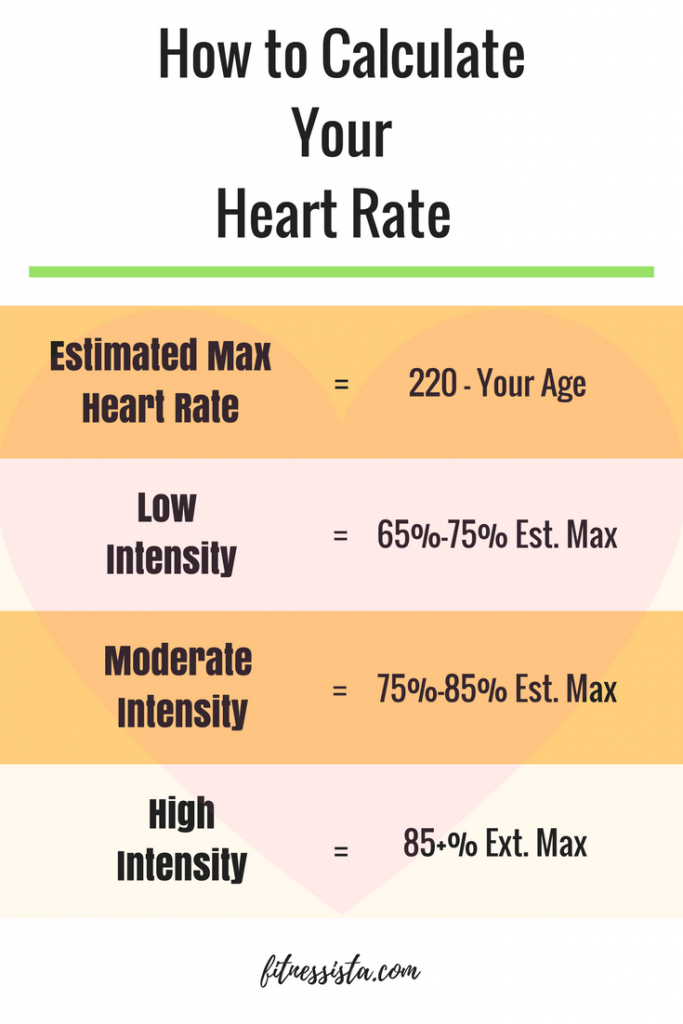How Much Cardio Is Too Much? (A Clear Answer)
October 11, 2021 at 11:50AM
Running, biking and other aerobic exercise help improve your health and fitness. Find out just how much aerobic exercise is right for you and how much cardio is too much.
Hi friends! How’s the morning going?? We had an awesome weekend at the pumpkin patch and lots of fun adventures. For today’s post, I updated an older *beefy* one with lots of fitness tips. If you’re wondering about how much cardio to do and need help with your routine, hop on the Fit Team wait list here! Enrollment opens this week (Wednesday!!) and I can’t wait to share it with you.
ADVERTISEMENT
ADVERTISEMENTKate Spade Autumn/Winter Sale |
I frequently get variations of the same question:
What is a *good* amount of cardio?
How much is too much?
ADVERTISEMENT
ADVERTISEMENTSports Direct Free Delivery on All Orders! |
What’s the bare minimum?
Let me dust off my cardio queen badge and tell you a long tale.
ADVERTISEMENT |
How Much Cardio Is Too Much? (A Clear Answer)
The Tale of the Cardio Queen
Back in the day, I thought cardio was the “end all be all” of health, fitness, and (what my goal was at the time) weight loss. I figured that more was better as far as cardio goes. Little did I know, I was burning my precious muscle away as I pounded the treadmill and was striding along on the elliptical.
It’s equally tragic and amusing to consider the amount of time I spent doing cardio, thinking I was throwing myself a solid to only later find out that it was overkill. I cardio-ed my little heart out, and there was a time when I was going an hour + of cardio, almost every day of the week. I was doing way too much cardio. (This is also when I screwed up my metabolism years ago.)
Thankfully, I started to work in the fitness industry, became certified to teach group fitness and work as a personal trainer, and learned a lot about the cardio balancing act. It takes a little time to find out the amount and types of cardio that will propel you towards your goals, while providing endorphins, SWEAT, and performance gains (including endurance, speed and agility).
It wasn’t until I cut down my cardio duration and really made the exercises count that I noticed a difference in my fitness gains. I also felt a major boost in my gym mojo, as I was no longer using cardio time to read books and gab with friends. (<— which is still fun, but it opened doors as far as new classes, HIIT methods, and cardio modalities go!)
Cardio FAQ and Tips for Finding Your Personal Cardio Sweet Spot
(As always, check with a doctor before making any fitness changes. If you have medical conditions or have a sedentary lifestyle, it’s especially important to start a cardio program with the guidance of a physician. As always, honor your body.)
ADVERTISEMENT

ADVERTISEMENT
Anya Hindmarch - I AM A PLASTIC BAGWhat the heck is cardio exactly? Does strength training count as cardio?
Cardiovascular fitness is a critical aspect of health, which involves the intake, transportation and usage of oxygen during exercise. Your heart, lungs and muscles work in harmony as you’re jogging, sprinting, or even vacuuming throughout the day.
We measure cardio through VO2Max, which is the maximum amount of the body’s oxygen consumption. It’s not easy to measure, so usually we’ll determine cardio intensity as a percentage of your maximum heart rate.
Example: I’m 36 so my estimated max heart rate is 220-36= 184. If I want to hit 80% of my max heart rate, 184 x .8 = 147.2. So in that case, I’d aim to hit around 147 if I was wearing a heart rate monitor. This is in line with NASM recommendations, which where I earned my personal training certification.
As far as strength training counting as cardio, it certainly can. It really depends on consistently elevating your heart rate. If you’re doing traditional hypertrophy training (3 sets of 10-12 reps, resting in between sets), there’s a good chance that you will not elevate your heart rate and sustain it during your workout. If you’re doing more circuit-style workouts, or supersetting multiple exercises, your heart rate will likely remain elevated! This can definitely count as cardio. Sometimes for circuit workouts, my heart rate is higher than it would be if I were doing steady state, like jogging on the treadmill or dancing.
What are the recommendations for cardio?
I don’t ever recommend doing over an hour of cardio, unless you’re training for a specific event. If you just really LOVE cardio, make sure that you have some off days (yes, more than one! especially in this case) to let your body recover. If you are consistently training the same muscles, especially if you perform the same types of cardio each day, you will not give them the chance to grow back stronger and recover. Also, this can set you up for overuse injuries <– not a picnic.
Make sure that you are giving your body the chance to heal in between sessions, and be sure to alternate cardio intensities. I always like to throw the reminder out there that the heart is a MUSCLE, and a pretty dang important one. It needs rest, just like your legs, shoulders, chest, back, etc. all do.
Here are general recommendations for cardio:
At least 150 minutes of moderate-intensity cardiorespiratory exercise, 75 minutes of vigorous-intensity, or a combination of moderate- and vigorous-intensity exercise per week. The weekly recommendation for resistance training is 2 or more days per week with exercises for all the major muscle groups (minimum of 1 set of 8-12 repetitions for each muscle group). Flexibility and neuromotor exercises (balance, agility, coordination) are also recommended at least twice per week.
I think that 150 minutes a week of moderate cardio is a great goal. If you’re working out 5x a week, that’s 30 minutes each day. As far as the bare minimum goes, I like to recommend to walk for 20 minutes every day. That’s it. You can break cardio sessions into blocks if you need to, which leads me to the next question.
I don’t have a lot of time to do a solid cardio block. Should I just skip it altogether?
Split it up!! I used to be guilty of thinking that if I didn’t have the time to do more than 10 minutes, it wasn’t worth it. It IS totally worth it and can be beneficial. After we work out, our body has to work hard to replenish its stores and regulate tissue temperature. This is called EPOC (Excess post-exercise oxygen consumption) and burns extra calories. By getting in multiple short workouts each day, you get bonus EPOC sessions. So do what you can, when you can. If you only have 20 minutes to work out, here are some ideas.
Tips for Cardio
Start slowly and build up from there.
It’s smarter to start out with less and build up from there.
Focus on quality over quantity.
Really focus on making the time count, and getting the most out of your workout. It’s not about how many minutes you can add onto your time, but more about how you FEEL. Do you feel challenged, sweaty, energized (not drained)?
Your personal cardio magic number may be different than the recommendations above.
Depending on the types of cardio modes you do, how often you strength train, and your daily activity level, you may find that you need way less “traditional cardio” and more strength. It’s all a matter of experimentation and finding the magic number according to your unique goals and circumstance. This number may also change week to week depending on what’s going on. Cardio is a critical aspect of health, so if you can, try to walk a bit and be active each day.
Don’t overdo it.
Unnecessarily high cardio activity (without a purpose, like training for an event) can set yourself for overuse injuries, increased cortisol levels, depleted immune system function, dreading your training, increased resting heart rate, pain in your joints, extreme muscle soreness, and fatigue. It can make your hunger levels go haywire and affect your hormones (which is why many women who do too much grueling cardio can suffer from a lack of menstrual cycle, hair loss, skin changes, anxiety, depression, sleep changes, and irritability). When you overdo it on cardio, your body can also start to use its own lean muscle as fuel, which decreases overall strength and muscle mass. Your body composition changes and you need to find the sweet spot for cardio in your workout routine — one that works for you and your unique goals.
If you hate it, ditch it.
There are so many cardio fish in the sea, you are destined to find something you love. Don’t be afraid to try out different classes, modes, and instructors until you find your perfect match. If you decide traditional cardio isn’t for you, get it through circuit training or something else that will increase your heart rate. Don’t forget the bonus of unintentional exercise (also called NEAT: non-exercise activity thermogenesis), and that you’re burning calories and increasing your heart rate through everyday physical activities like household chores, gardening, errands, intimate activities, etc. 🙂
So tell me friends, how often do you do cardio in your routine right now? When I was teaching at the resort I was doing intense amounts — teaching up to 3 dance cardio classes in a row. My knee also hated me. Right now, I only do 2-3 days of cardio and also walk Maisey every day.
xoxo
Gina
Some resources:
35 cardio-based bodyweight exercises
What does cardio fitness mean?
Building muscle while burning fat
The post How Much Cardio Is Too Much? (A Clear Answer) appeared first on The Fitnessista.
Continue Reading…
Author Fitnessista | citywomen.co
Selected by CWC
ADVERTISEMENT
ADVERTISEMENTUp to 30% off Gift Sets |









